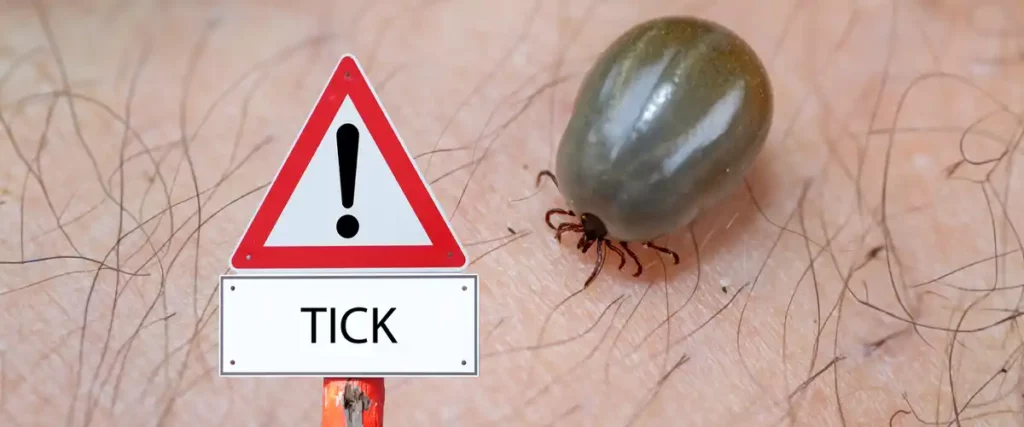Tick Treatment: Effective Solutions for Tick Control and Prevention
Do you enjoy spending time outdoors, exploring nature, or playing with your pets? If so, you may have encountered the tiny yet formidable creatures called ticks. They are small arachnids known for transmitting diseases to humans and animals. Tick control and prevention are paramount to safeguard our health and well-being.
Furthermore, understanding ticks and their behavior, recognizing their risks, and implementing effective prevention measures can minimize the likelihood of tick infestations and reduce the spread of tick-borne diseases.

Understanding Ticks and Their Behavior
There are several species of ticks, each with its characteristics and habitats. The following are the most common types of ticks, including:
- Deer Ticks (Ixodes scapularis) – are frequently found in woodland regions and are renowned for spreading Lyme disease.
- Brown Dog Ticks (Rhipicephalus sanguineus) – primarily infest dogs and can transmit diseases like ehrlichiosis and babesiosis.
- American Dog Ticks (Dermacentor variabilis) – Found in grassy areas and woodlands, American dog ticks can transmit Rocky Mountain spotted fever and tularemia.
- Lone Star Ticks (Amblyomma americanum) – are prevalent across the eastern and southern regions of the United States and can transmit ehrlichiosis, tularemia, and Southern tick-associated rash illness (STARI).
- Blacklegged Ticks (Ixodes pacificus) – are common carriers of Lyme disease on the United States West Coast.
The four stages of these parasites’ complex life cycle are egg, larva, nymph, and adult. They require blood meals at each location to progress, specifically with some species preferring specific hosts. Understanding the life cycle of ticks is also crucial in implementing effective prevention strategies.
Ticks thrive in warm and humid environments, favoring wooded areas, tall grasses, and brushy habitats. Besides, they rely on their sensory organs to detect hosts and latch onto them by crawling or dropping from above. Identifying signs of tick infestation includes the following:
- The frequent finding of ticks on pets or humans
- A small, reddened area with a central puncture mark characterizes tick bites.
- Pets were excessively scratching or grooming certain areas of their body.
- Symptoms of tick-borne diseases include fever, fatigue, muscle aches, and joint pain.

The Risks of Tick Infestation
Ticks pose a serious hazard to human and animal health because they can spread several diseases. The bites of infected ticks can lead to infections that may consequently and alarmingly result in severe and life-threatening health complications. Common health risks associated with tick infestation include the following:
- Lyme disease – brought on by the bacterium Borrelia burgdorferi, can result in joint discomfort, exhaustion, headaches, and neurological problems if left untreated.
- Rocky Mountain Spotted Fever – Rickettsia rickettsii can cause organ damage, rash, and fever in this potentially fatal illness.
- Ehrlichiosis – is a bacterial illness that ticks can spread, resulting in symptoms like fever, headache, muscle aches, and fatigue.
- Babesiosis – is a parasitic infection that affects red blood cells and can lead to fatigue, fever, and anemia.
- Anaplasmosis – is a bacterial infection transmitted to humans through the bites of infected ticks. It may result in flu-like symptoms like fever, chills, muscle aches, and fatigue. The Anaplasma bacteria cause it and are most common in the United States.
- Southern Tick-Associated Rash Illness (STARI) – is a condition with symptoms similar to Lyme disease, but its precise cause is still unknown. The Lone Star tick transmits it and is associated with a circular rash.
- Tularemia – The bacterium Francisella tularensis can transmit a bacterial infection through ticks, other vectors like deer flies and mosquitoes, or through handling infected animals. It leads to symptoms like fever, chills, fatigue, and skin ulcers.
- Tick-Borne Relapsing Fever – Several bacterial species carried by infected ticks can bring this on when they bite humans. The disease exhibits recurring fever episodes and symptoms like headache and muscle aches.
Tick prevention is crucial for safeguarding the well-being of individuals and pets. Implementing effective preventive measures can significantly decrease the likelihood of tick bites and reduce the risk of developing related illnesses.

Effective Tick Prevention Measures
Defend your family and yourself from tick-borne diseases with these effective tick-prevention measures. Safeguarding against these tiny but dangerous pests is crucial, and implementing the following strategies can significantly reduce the risk of tick encounters and potential health complications:
- Eliminating Tick Habitats in Outdoor Areas – Clearing tall grasses, removing leaf litter, and creating physical barriers can help reduce tick populations in your surroundings.
- Sealing Off Cracks and Crevices – Ticks can enter homes and buildings through small openings. Sealing off these entry points prevents ticks from invading indoor spaces.
- Using Tick-Repellent Products – Applying tick-repellent products on exposed skin and clothing can provide additional protection against tick bites.
- Regular Pest Control Services – Professional pest control services can help control tick infestations using targeted treatments and preventive measures.

Tick Control Methods
Effective tick control methods are crucial when protecting yourself and your loved ones from ticks. The following are the main tactics to assist you in decreasing tick exposure and lowering your risk of contracting diseases spread by ticks:
1. Chemical Pesticide Treatment Options
You can apply insecticides specifically formulated for ticks to the environment or directly on pets to kill ticks and interrupt their life cycle. Following safety guidelines and choosing safe products for humans and pets is essential.
2. Natural and Organic Tick Treatments
Some natural remedies, such as essential oils or diatomaceous earth, are believed to repel ticks. While these methods may have some effect, their effectiveness may vary, and it is important to consult experts for guidance.
3. Professional Tick Control Services
Hiring professional tick control services is highly beneficial. Experts can also conduct a detailed tick inspection, formulate a tailored eradication plan, and implement efficient and safe tick control methods.

Benefits of Professional Tick Control Services
When it comes to tick control, enlisting the help of professionals can provide a range of advantages. Tulsa Professional tick control services are a wise investment in protecting your house and outdoor areas because of the following benefits:
- Detailed Tick Inspection – Professionals have the expertise to identify tick habitats and assess the extent of infestations, ensuring a thorough eradication process.
- Tailored Tick Eradication Plan – Based on the inspection, professionals can develop a customized eradication plan that targets the specific tick species and their habitats, maximizing effectiveness.
- Efficient, Effective, and Safe Tick Control Methods – Professionals use specialized tools and treatments to eliminate ticks while minimizing human and pet health risks.
- Follow-Up Tick Prevention Recommendations – Professionals can guide ongoing prevention measures to maintain a tick-free environment after eradicating ticks.

Taking Action Against Ticks!
In summary, Tick control and prevention contribute significantly to maintaining people’s health and the well-being of individuals and pets. Understanding the behavior of ticks, especially recognizing the risks associated with infestations, and implementing effective preventive measures are essential. While various tick control methods are available, professional tick control services offer comprehensive solutions, including detailed inspections, tailored eradication plans, and follow-up prevention recommendations.
Furthermore, by taking proactive measures and seeking professional assistance, individuals can minimize the threat of tick-borne diseases and enjoy a safer and healthier environment.
References:
- Stop Ticks to Avoid Lyme and Other Tickborne Diseases (2021, May 17). Retrieved from https://www.cdc.gov/ncezid/dvbd/media/stopticks.html
- TICK CONTROL MEASURES retrieved from https://www.cfsph.iastate.edu/Maddies_Textbook/Resources/InfectionControl/TIck%20Control%20Measures.pdf
- Stafford, K. C., Williams, S. C., & Molaei, G. (2017). Integrated Pest Management in Controlling Ticks and Tick-Associated Diseases. Journal of Integrated Pest Management, 8(1). https://doi.org/10.1093/jipm/pmx018







